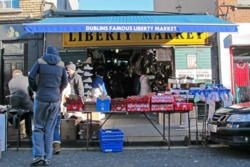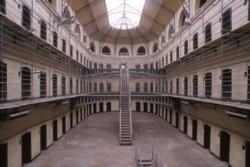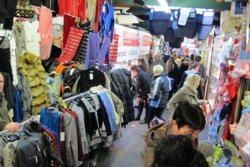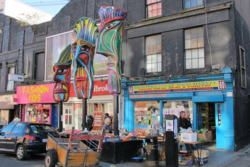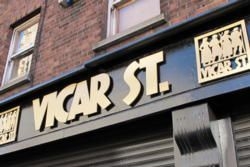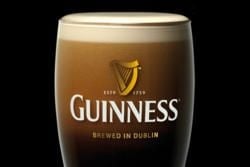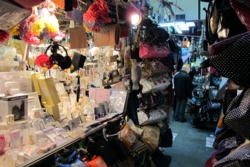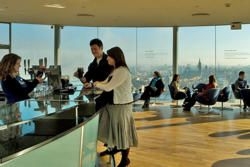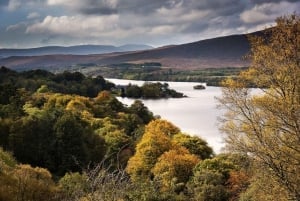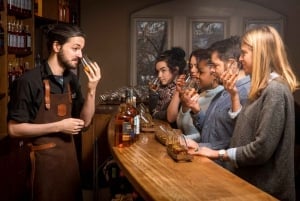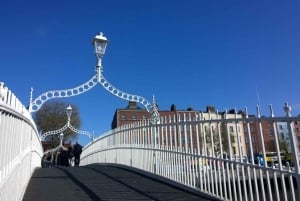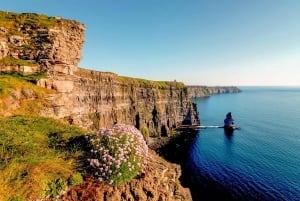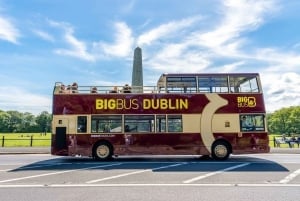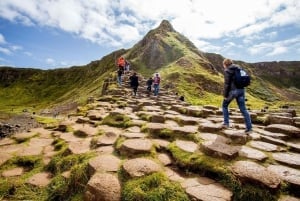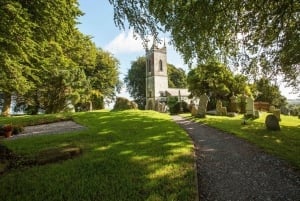The Liberties + Kilmainham Area
Hands up - who’s planning a visit to the Guinness Storehouse? As
Arthur Guinness started it all in 1759 in a disused brewery at St James’s Gate, to the west of The Liberties area of Dublin. Being a gentleman who took the long view (and no slouch when it came to business acumen), Guinness signed a 9000-year lease - including valuable water rights. On 16 May 1775, a Dublin Corporation committee came a-calling with a sheriff in tow, intending to cut off the channel from which the Brewery drew its water. Casually brandishing a pickaxe, Arthur politely asked them to take a hike. Following a long-running dispute, matters were finally settled in 1784 when water rights were granted for 8,975 years.
How Guinness has become known and enjoyed worldwide since then is an undeniably fascinating story, and there are few better ways to see Dublin than from the panoramic Gravity Bar - with that pint in hand, of course.
A short walk east from the Guinness Storehouse puts you in the epicentre of The Liberties. This particular area generally corresponds to the Dublin 8 postal district and places nearby, southwest of the bustling heart of the city centre. Steadfastly un-gentrified, this is primarily a working-class neighbourhood which has proudly retained its independent character - and its streets - largely intact. Self-governing until the nineteenth century, The Liberties is named after a variety of freedoms historically granted by charter, including free customs, freedom from certain taxes and services, and the right to maintain their own fairs and markets.
Liberty Market is an excellent modern example of the local vibe. On Meath Street (off Thomas Street, quite close to Christ Church Cathedral), it’s a maze-like Aladdin’s cave of cheap socks, sweeties which may be only days from being out-of-date, CDs, flashy trainers (sneakers), clothing, costume jewels and all sorts of bric-a-brac. Bargains galore (and an opportunity to haggle to your heart’s content with stallholders), set in a location oozing with the essence of ‘the real Dublin’. Running Thursdays, Fridays, Saturdays (plus Sundays in the few weeks before Christmas) from 10am to mid-afternoon.
Turn the corner and you’ll encounter a small live venue with a big reputation - the renowned Vicar Street has an intimate capacity of 1050 seated/1500 standing. This atmospheric spot has witnessed hundreds of memorable shows since it first opened for business on Thomas Street in 1998, and they’re still going strong with a full schedule of upcoming events. The best in comedy and music fill a busy calendar.
To experience more of an old-world Liberties flavour, visit The Brazen Head (at 20 Bridge Street Lower). Dating back to 1198, The Brazen Head proudly lays claim to the title of Ireland’s oldest pub. While not every inch of the original coach house is still intact, you can practically feel the history brushing against you within these walls. A watering hole for literary notables James Joyce, Brendan Behan and Jonathan Swift, the pub was also a haunt for rebels and revolutionaries, serving Robert Emmet, Wolfe Tone, Daniel O’Connell and Michael Collins. To hear their stories and soak up the atmosphere, try 'An Evening of Food, Folklore and Fairies'.
To the west of The Liberties and the Guinness Storehouse, Kilmainham (actually once a liberty itself with its own rights and privileges) is home to two particularly important attractions, whether you’re interested in history - or culture - or both.
Opened in 1796 (and unoccupied since 1924), Kilmainham Gaol on Inchicore Road fascinates with a major exhibition detailing some of the most heroic and tragic events in Ireland’s struggle for independence. Give yourself time to see these interesting exhibits before setting off on the hour-long Tour (the Gaol is viewed by Guided Tour only, with groups to be booked in advance). Including an audio-visual show, this offers a sobering insight into the harsh realities of punishment and correction in a place which came to represent Irish martyrdom and British oppression. Two seasonal notes for visitors: this is a very busy site and there may be delays during the summer months; during the cooler months, the interior of the Gaol is very cold - just as it would have been for those unfortunate enough to have been locked up here! - so unless you’re especially trying to ‘keep it real’, wear something warm.
A short walk from Kilmainham Gaol, on Military Road, sits The Royal Hospital Kilmainham - restored in 1984 and the home of the Irish Museum of Modern Art since 1991. This is the oldest classical public building in Ireland - once an army pensioners’ retirement home, these days it’s home to an art museum dedicated to showing the best of Irish and international art today.
The Royal Hospital Kilmainham (RHK) was established and built between 1680 and 1684 on 60 acres granted by King Charles II to his Viceroy James Butler, Duke of Ormonde. As future residents, soldiers paid the building costs (approximately £22,500) by taking a hit on their pay packets in the form of a levy. The new edifice rose from the ruins of a medieval hospital and monastery founded by Strongbow (a leader of the Norman invasion of Ireland) in 1174.
Where elderly former military men once quietly saw out their days clutching cups of weak tea, the RHK now offers banqueting and conference facilities in this elegant building which sits prettily in its own formal landscaped grounds. In the better-weather months, you can see live music events outdoors on the grounds - the summer of 2012 featured the Forbidden Fruit Festival (three days, five stages, dozens of acts).
The Irish Museum of Modern Art (Áras Nua-Ealaíne na hÉireann) or IMMA is Ireland’s leading national institution for modern and contemporary art, presenting a wide variety of dynamic exhibitions. To those thinking of visiting over the next few of months, please note: due to extensive refurbishment, IMMA’s main building will be closed until autumn 2013. In the meantime, exhibitions carry on in two separate locations - the New Galleries in the grounds of the RHK, and the ground floor exhibition spaces in the National Concert Hall (NCH) building on Earlsfort Terrace in the city centre (further NCH info here). Regardless of the building work, the grounds at the RHK remain open to the public with four different art trails available to visitors, plus a café and bookshop.
Photos, from top to bottom: The Black Stuff; The Gravity Bar (Guinness Storehouse); Thomas Street (The Liberties); Liberty Market Entrance; Inside Liberty Market; Vicar Street; Kilmainham Gaol


